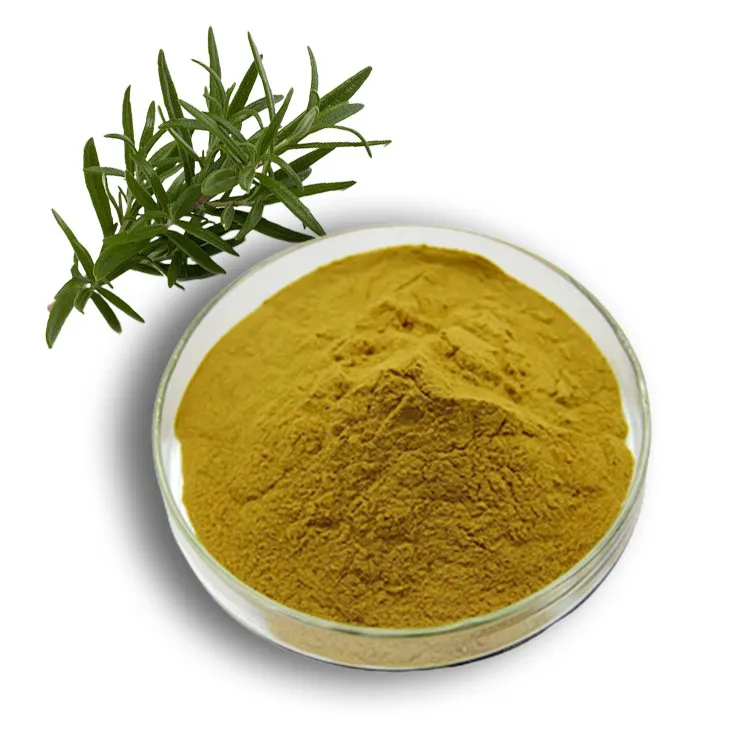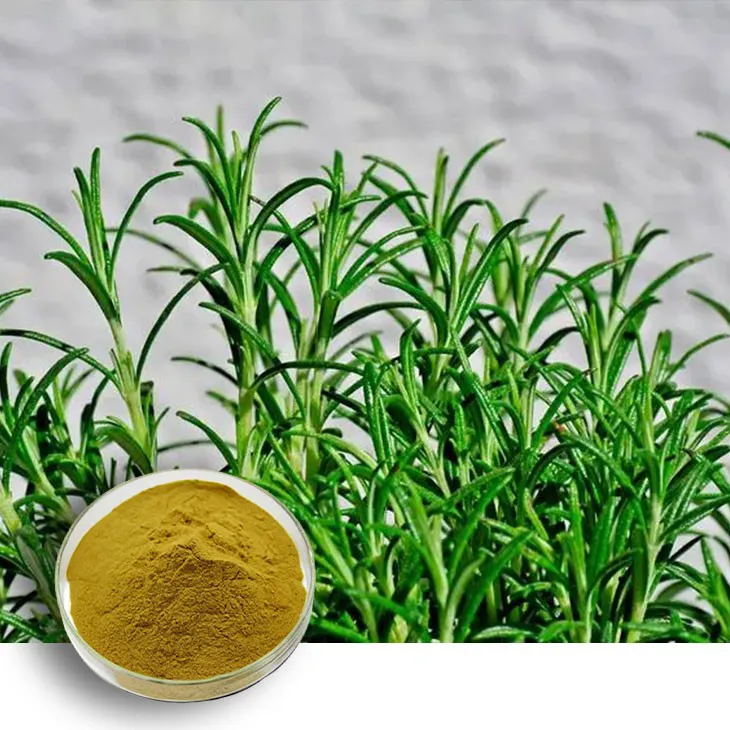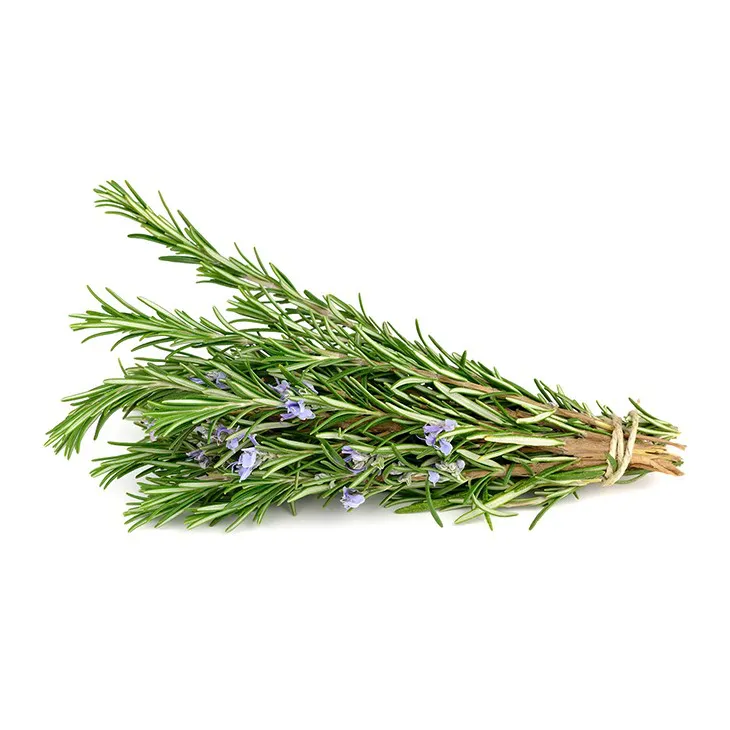- 0086-571-85302990
- sales@greenskybio.com
Components of rosemary extract in fertilizers and feeds.
2024-11-29

1. Introduction
Rosemary extract has emerged as a valuable component in both fertilizers and feeds in recent years. With the increasing demand for sustainable and natural products in the agricultural and livestock sectors, the significance of Rosemary extract cannot be overstated. Rosemary, a well - known herb, contains a variety of bio - components that offer multiple benefits when incorporated into fertilizers and feeds.

2. Rosemary extract in Fertilizers
2.1 Soil Structure Modification
One of the key roles of rosemary extract in fertilizers is its ability to modify soil structure. The bio - components present in the extract interact with the soil particles. For example, certain compounds in the rosemary extract can bind to soil aggregates, preventing their breakdown. This binding action helps in creating a more stable soil structure.
As a result, the soil's ability to retain water is enhanced. Water retention is crucial for plant growth as it ensures that plants have a continuous supply of moisture. In addition, a well - structured soil with the influence of rosemary extract also has improved aeration. Adequate soil aeration allows plant roots to access oxygen, which is necessary for root respiration and overall plant health.
2.2 Nutrient Enhancement
Rosemary extract can also play a role in nutrient enhancement in fertilizers. It may contain trace elements that are beneficial for plants. These elements can be released slowly over time, providing a continuous supply of nutrients to the plants. For instance, some components of the rosemary extract can chelate with essential minerals such as iron and zinc, making them more available for plant uptake.
This chelation process is important because in natural soils, some nutrients may be present in forms that are not easily accessible to plants. By chelating these nutrients, rosemary extract helps plants to absorb them more efficiently, leading to better growth and development. Moreover, the presence of rosemary extract in fertilizers can also stimulate the activity of beneficial soil microorganisms. These microorganisms are involved in nutrient cycling, further enhancing the availability of nutrients in the soil.

3. Rosemary Extract in Feeds
3.1 Natural Preservative
In the context of animal feeds, rosemary extract acts as a natural preservative. Feed rancidity is a common problem in the livestock industry. It occurs due to the oxidation of fats in the feed. Rosemary extract contains antioxidants such as carnosic acid and rosmarinic acid. These antioxidants are highly effective in preventing the oxidation of fats in the feed.
By preventing rancidity, rosemary extract helps to maintain the quality and nutritional value of the feed. Rancid feed can have a negative impact on animal health and performance. Animals may show reduced appetite, lower growth rates, and even susceptibility to diseases when fed with rancid feed. Therefore, the use of rosemary extract as a natural preservative can significantly improve the overall quality of animal feeds.
3.2 Nutritional Benefits for Animals
Rosemary extract also offers essential nutrients and health - promoting factors to animals. It contains vitamins such as vitamin C and vitamin E, which are important for the immune system of animals. These vitamins help animals to resist diseases and infections. In addition, the bio - components in rosemary extract can have a positive impact on the digestive system of animals.
For example, some compounds in the extract can stimulate the secretion of digestive enzymes, improving the digestion and absorption of nutrients. This can lead to better feed conversion ratios in animals, meaning that animals can convert feed into body mass more efficiently. Moreover, rosemary extract may also have anti - inflammatory properties, which can help to reduce inflammation in the body of animals, especially in cases where animals are exposed to stressors or pathogens.

4. Bio - components of Rosemary Extract
4.1 Carnosic Acid
Carnosic acid is one of the major bio - components in rosemary extract. In fertilizers, carnosic acid can have a positive impact on soil microbial communities. It can stimulate the growth of certain beneficial bacteria and fungi in the soil. These microorganisms play important roles in decomposing organic matter, releasing nutrients, and improving soil fertility.
In feeds, carnosic acid is a powerful antioxidant. It can scavenge free radicals in the body of animals, protecting cells from oxidative damage. This antioxidant property is crucial for maintaining the health of animals, especially in preventing diseases related to oxidative stress such as liver damage and muscle degeneration.
4.2 Rosmarinic Acid
Rosmarinic acid is another important bio - component. In fertilizers, rosmarinic acid can enhance the solubility of certain nutrients in the soil. It can also improve the ability of plants to tolerate environmental stresses such as drought and salinity. This is because rosmarinic acid can regulate the physiological processes in plants, such as stomatal closure and osmotic adjustment.
In feeds, rosmarinic acid has anti - inflammatory and immunomodulatory properties. It can reduce inflammation in the gut of animals, improving gut health. A healthy gut is essential for the proper absorption of nutrients and overall well - being of animals. Additionally, rosmarinic acid can enhance the immune response of animals, making them more resistant to infections.

5. Applications and Considerations
5.1 Application in Different Crops and Livestock
Rosemary extract can be applied in a wide range of crops. For cereal crops like wheat and rice, the use of rosemary extract - based fertilizers can improve soil conditions and nutrient uptake, leading to higher yields. In horticultural crops such as tomatoes and roses, it can enhance the quality of the produce, for example, by improving the color and flavor of fruits and flowers.
In livestock, it can be used in different types of feeds for various animals. For poultry, it can improve egg quality and the growth rate of chicks. In swine production, it can enhance the feed efficiency and the health of pigs. However, it is important to note that the appropriate dosage of rosemary extract needs to be determined for different crops and livestock to ensure optimal results.
5.2 Considerations for Safe and Effective Use
When using rosemary extract in fertilizers and feeds, several considerations are necessary for safe and effective use. First, the quality of the rosemary extract should be carefully monitored. High - quality extracts with a consistent composition are preferred. Second, the storage conditions of fertilizers and feeds containing rosemary extract should be appropriate to maintain the stability of the extract.
For example, they should be stored in a cool and dry place to prevent the degradation of the bio - components. Third, regulatory compliance is crucial. Manufacturers need to ensure that the use of rosemary extract in fertilizers and feeds complies with relevant regulations regarding food safety and environmental protection. This includes meeting the maximum residue limits in animal products and ensuring that the use of fertilizers does not have a negative impact on soil and water quality.
6. Conclusion
Rosemary extract has diverse components that offer a wide range of benefits in fertilizers and feeds. In fertilizers, it can improve soil structure, enhance water retention and aeration, and promote nutrient availability. In feeds, it serves as a natural preservative and provides essential nutrients and health - promoting factors to animals. The bio - components such as carnosic acid and rosmarinic acid play important roles in both applications.
As the agricultural and livestock industries continue to seek sustainable and natural solutions, the use of rosemary extract is likely to increase. However, proper attention should be given to its application methods, dosage, and quality control to ensure its safe and effective use. Overall, rosemary extract holds great potential in modern agricultural and livestock production systems.
FAQ:
Q1: What are the main components of rosemary extract in fertilizers?
Rosemary extract in fertilizers contains various bio - components. These may include phenolic compounds, flavonoids, and diterpenes. These components can interact with the soil, for example, phenolic compounds may help in modifying the soil structure by binding with soil particles, thus enhancing water retention and aeration.
Q2: How does rosemary extract in feed act as a natural preservative?
Rosemary extract contains antioxidant substances such as carnosic acid and rosmarinic acid. These antioxidants can prevent the oxidation of fats in the feed, which is the main cause of rancidity. By scavenging free radicals and inhibiting lipid peroxidation, it effectively extends the shelf - life of the feed.
Q3: What health - promoting factors does rosemary extract in feed offer to animals?
The bio - active components in rosemary extract have anti - inflammatory and antimicrobial properties. For example, it can help in reducing inflammation in the digestive tract of animals, improving gut health. Also, its antimicrobial properties can prevent the growth of harmful bacteria in the animal's body, promoting overall health and well - being.
Q4: Can rosemary extract in fertilizers improve plant growth directly?
Yes, it can. By improving the soil structure, it creates a more favorable environment for plant roots. This allows roots to grow more easily, access water and nutrients more efficiently. Moreover, some components of rosemary extract may also have a mild stimulatory effect on plant growth hormones, which can directly enhance plant growth.
Q5: How should rosemary extract be added to fertilizers and feeds?
For fertilizers, it can be mixed with other fertilizer components during the manufacturing process, usually in a specific proportion according to the type of soil and plants. In feeds, it can be sprayed onto the feed or mixed uniformly during the feed - making process. The amount added should be carefully controlled to ensure effectiveness without causing any adverse effects.
Related literature
- The Role of Rosemary Extract in Modern Agriculture: Fertilizer and Feed Applications"
- "Bio - components of Rosemary Extract in Fertilizers and Their Impact on Soil Health"
- "Rosemary Extract in Animal Feed: A Natural Solution for Preserving and Promoting Health"
- ▶ Hesperidin
- ▶ citrus bioflavonoids
- ▶ plant extract
- ▶ lycopene
- ▶ Diosmin
- ▶ Grape seed extract
- ▶ Sea buckthorn Juice Powder
- ▶ Beetroot powder
- ▶ Hops Extract
- ▶ Artichoke Extract
- ▶ Reishi mushroom extract
- ▶ Astaxanthin
- ▶ Green Tea Extract
- ▶ Curcumin Extract
- ▶ Horse Chestnut Extract
- ▶ Other Problems
- ▶ Boswellia Serrata Extract
- ▶ Resveratrol Extract
- ▶ Marigold Extract
- ▶ Grape Leaf Extract
- ▶ blog3
- ▶ blog4
-
The best honeysuckle pollen on the market.
2024-11-29
-
The Best Rosemary Extract in 2024.
2024-11-29
-
The best - quality feverfew extract.
2024-11-29
-
The best organic aged garlic extract.
2024-11-29
-
Konjac flour manufacturers from China.
2024-11-29
-
Certified organic comfrey extract.
2024-11-29
-
The best sophora japonica extract in 2024.
2024-11-29
-
Black Rice Extract Manufacturers from China.
2024-11-29
-
Clove Powder
2024-11-29
-
Chasteberry Extract
2024-11-29
-
Lycopene
2024-11-29
-
Pine bark Extract Powder
2024-11-29
-
Oat Straw Extract Powder
2024-11-29
-
Sea buckthorn oil
2024-11-29
-
Phellodendron Extract
2024-11-29
-
Beetroot Powder
2024-11-29
-
Kupilu Extract
2024-11-29
-
Panax Ginseng Leaf Extract
2024-11-29





















